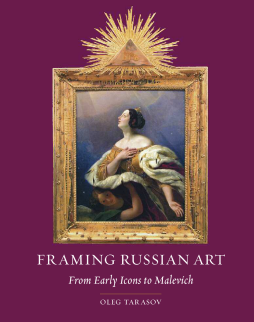
Additional Information
Book Details
Abstract
The notion of the frame in art can refer not only to a material frame bordering an image, but also to a conceptual frame. Both meanings are essential to how the work is perceived. In Framing Russian Art, art historian Oleg Tarasov investigates the role of the frame in its literal function of demarcating a work of art and in its conceptual function affectingthe understanding of what is seen.
The first part of the book is dedicated to the framework of the Russian icon. Here, Tarasov explores the historical and cultural meanings of the icon’s,setting, and of the iconostasis. Tarasov’s study then moves through Russian and European art from ancient times to the twentieth century, including abstract art and Suprematism. Along the way, Tarasov pays special attention to the Russian baroque period and the famous nineteenth century Russian battle painter Vasily Vereshchagin. This enlightening account of the cultural phenomenon of the frame and its ever-changing functions will appeal to students and scholars of Russian art history.
“This is not a book about the frame-maker’s craft, but a lengthy discussion of the purpose of frames, borders and surrounds in Russian art and architecture. Bringing to bear great scholarship, generously illustrated with numerous reproductions of unusual and beautiful examples, it gives the reader much cause to ponder their functions.” — Art Newspaper
Oleg Tarasov is a senior research fellow in the Department of Cultural History at the Institute of Slavic Studies at the Russian Academy of Sciences, Moscow. He is the author of Icon and Devotion, also published by Reaktion Books.
